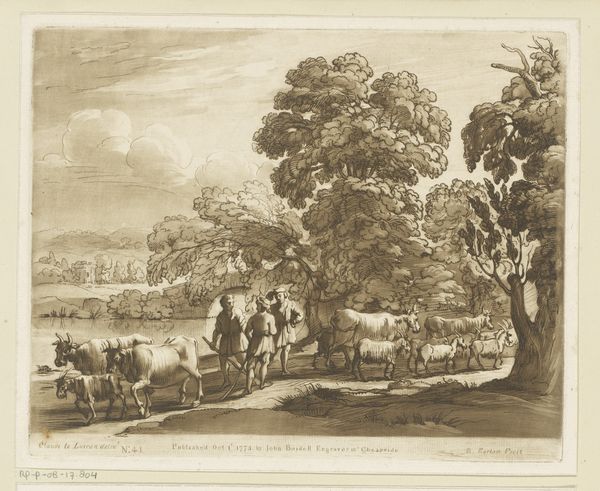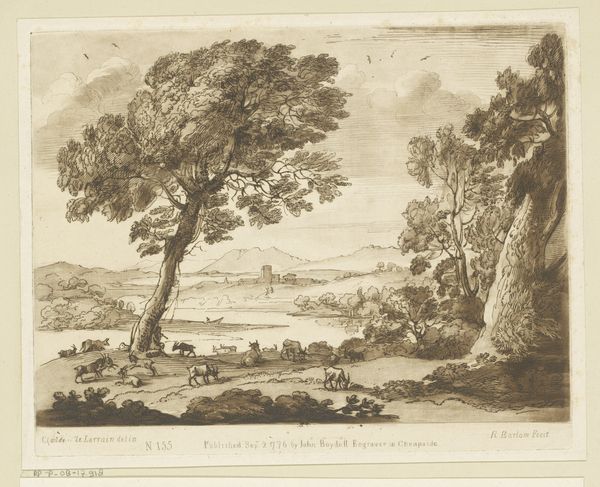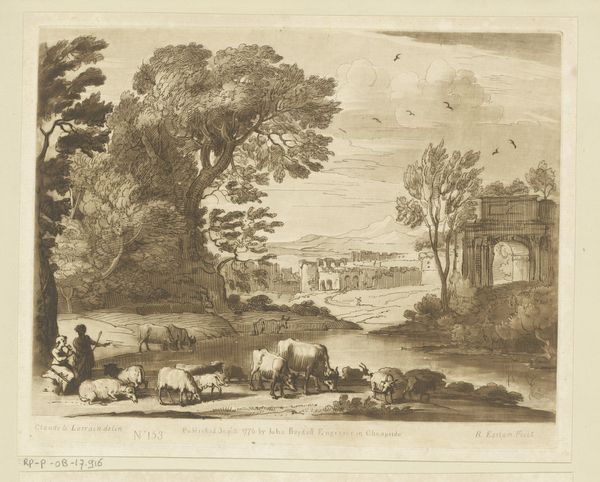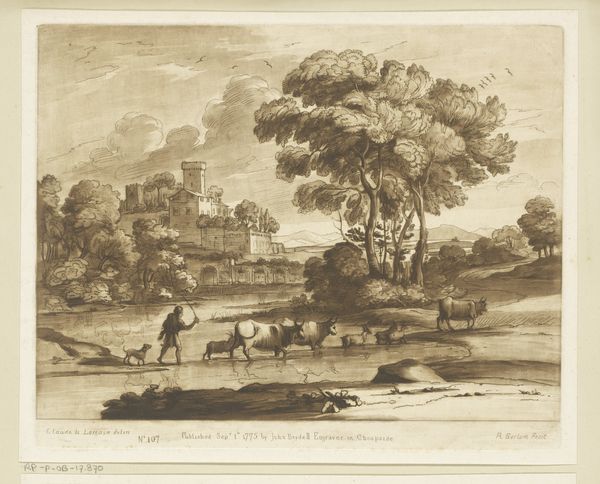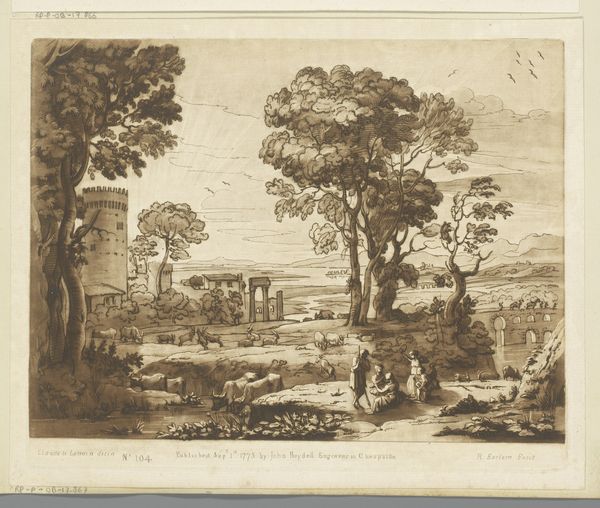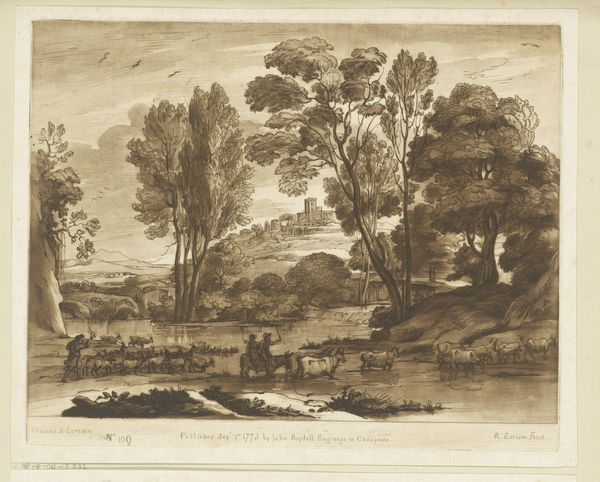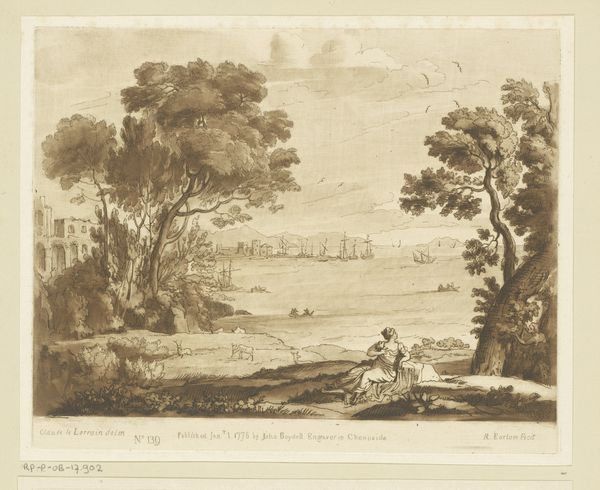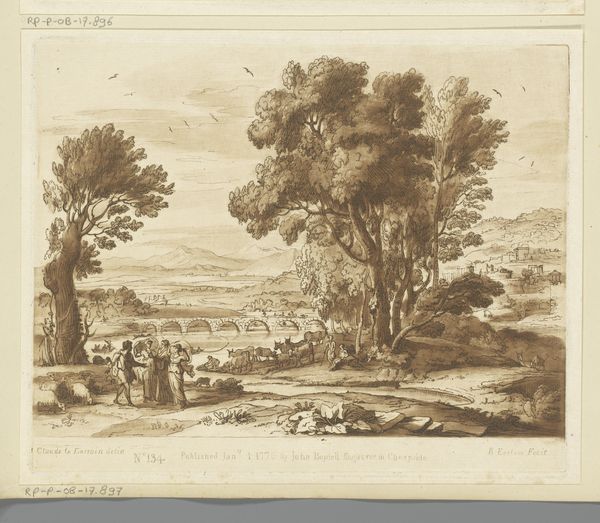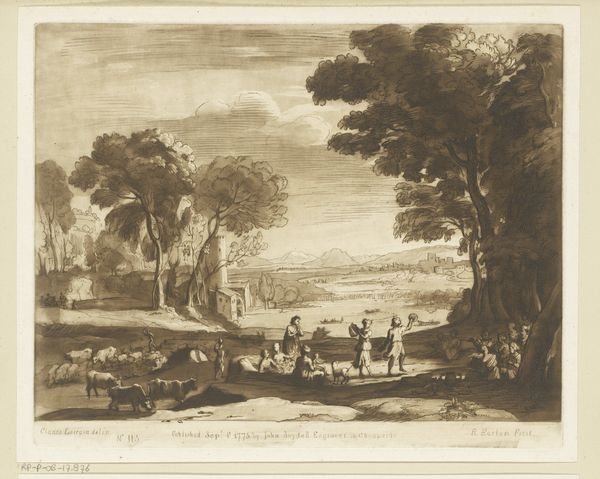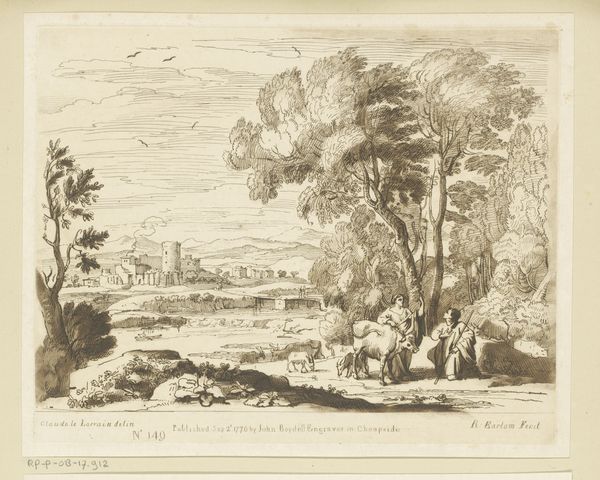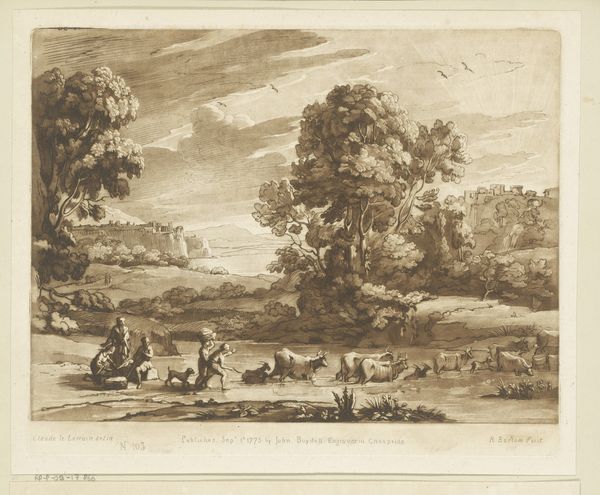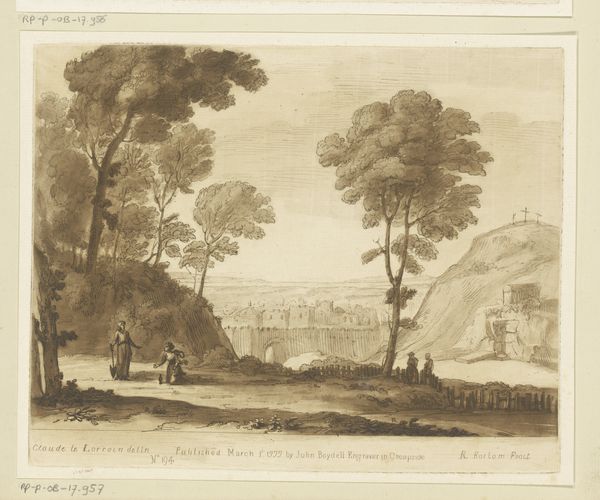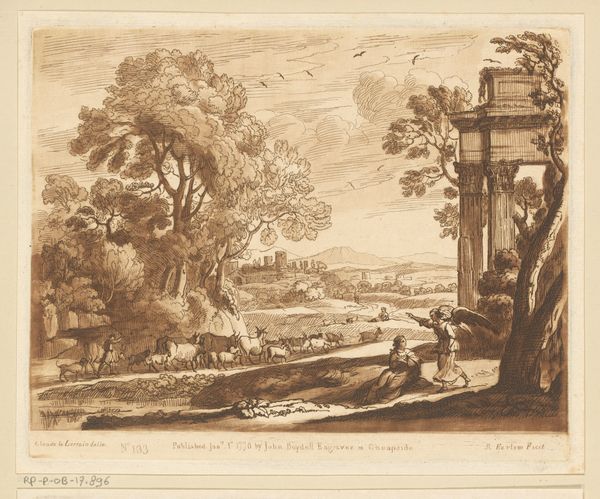
Dimensions: height 206 mm, width 260 mm
Copyright: Rijks Museum: Open Domain
Curator: This is a print entitled "Landschap met veedrijver bij een meer," or "Landscape with Cattle Drover by a Lake," likely created between 1776 and 1779. It’s attributed to Richard Earlom and is currently housed at the Rijksmuseum. The media is etching and engraving. Editor: It evokes a strange sense of tranquility, or maybe even a sublime unease. The monochrome palette, combined with the density of detail in the trees, makes the pastoral scene seem… heavy. Curator: I agree about the "weight." It achieves an intriguing tension through its formal devices. Note how Earlom balances the darker, more heavily worked areas on the left and right to frame the brighter, less detailed center, guiding the eye across the composition. The distant bridge creates an interesting horizontal accent as well. Editor: Indeed. And within that framework, there's a story being told about labor, property, and perhaps even a commentary on land use. Look at the lone drover—his relationship with those animals and the landscape is exploitative. The distant bridge, as you pointed out, whispers of trade and colonialism. I find myself considering how this scene reflects the increasing enclosure of common lands during that era and the disruption that ensued. Curator: Certainly, these socio-economic forces impacted land management, which impacted representation of the land in art. But isn't it possible that this is also an investigation into how line and tone can evoke a sense of place, even a poetic sensibility? Editor: I think it's impossible to extricate Earlom’s artistic choices from the social narratives that his work embodies. A man tending to the herd for his own gain – it highlights how this ownership influences the broader understanding and use of land, something Romanticism tried to conceal. Curator: It strikes me that what we agree upon is more than we disagree. Earlom has created an incredibly dynamic space with a keen awareness of visual composition, prompting critical thought of social impact that continues to resonate through centuries. Editor: Ultimately, it reminds us that art, regardless of the era, doesn't exist in a vacuum; it echoes broader societal currents. I think understanding this interaction enhances not only the art itself, but its role in culture through time.
Comments
No comments
Be the first to comment and join the conversation on the ultimate creative platform.
